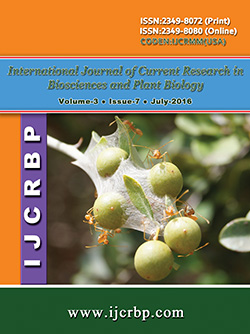 |
Online ISSN : 2349-8080 Issues : 12 per year Publisher : Excellent Publishers Email : editorinchiefijcrbp@gmail.com |
2Plant Breeding Section, Vasantdada Sugar Institute, Manjari (Bk), Pune-412 307, Maharashtra, India
3Department of Biotechnology, Rajiv Gandhi Institute of IT and Biotechnology, Bharthi Vidyapeeth Deemed University,
Pune, India
Variation in natural population occurs as a result of crossing, the evolution of ecotypes, mutations and natural selection. These processes have been accelerated by plant breeders with the refinement in the techniques of selection aided by modern scientific methods. It was now find that sugarcane plants obtained through tissue culture produce a range of variation as wide as that obtained through other means. Populations of subclones were studied for economic characters and the data analyzed show a significant variation from the donor parent CoC 671. The morphological variations viz., stem colour, intermodal alignment, leaf characters, waxiness, etc. were distinct and stable in the somaclones. The somaclonal variant TC 434 was moderately resistant to red rot disease by nodal method of inoculation as well as found drought tolerance with earliness. The present study suggests that somaclonal variation can be exploited to develop and improve agronomical traits, increase resistance to biotic and abiotic stress in crops like sugarcane.
